Warship Wednesday Sept 18 The Sailing Vesuvius
Here at LSOZI, we are going to take out every Wednesday for a look at the old steam/diesel navies of the 1859-1946 time period and will profile a different ship each week.
– Christopher Eger
Warship Wednesday Sept 18
Here we see the rather interesting creation that was the USS Vesuvius, the world’s first and only Dynamite Cruiser. While contemporary cruisers of the world’s navy’s were armed with cannon and torpedoes, this ship carried three huge 15-inch bomb-throwing pneumatic cannons.
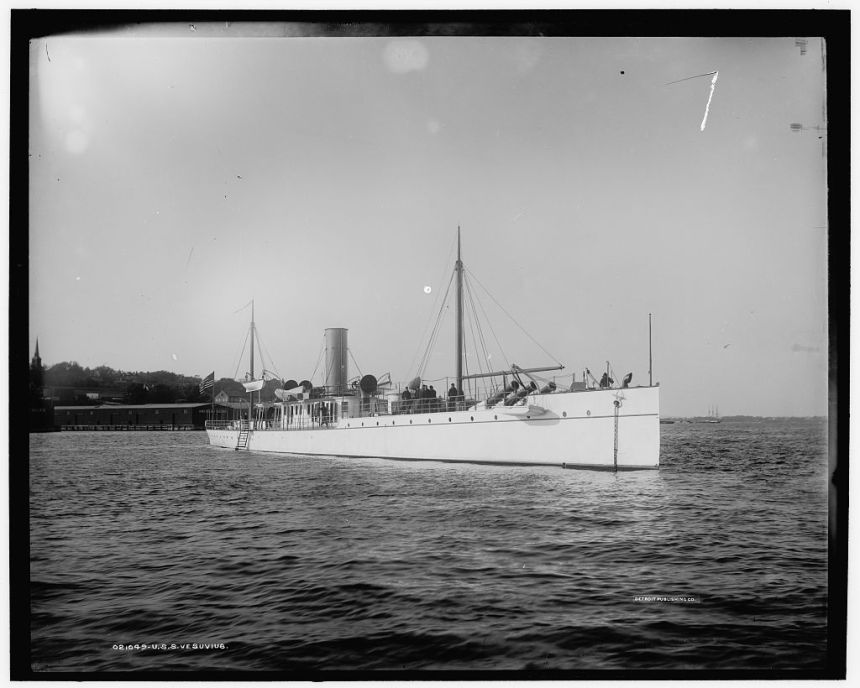
See the three tubes sticking up through the deck? Those are 55-foot long dynamite guns that run throughout the whole ship.
All guns are projectile weapons. In other words, they use force to propel an object down a barrel out to a target. The only thing that changes is the type of propellant and the projectile. In a Remington 870, a load of shot is scattered out of the muzzle by an explosion of smokeless powder set off by a primer. Well the dynamite gun does the same thing, it’s just that the projectile is made of TNT and it’s pushed out by a charge of compressed air. Kinda like a spud gun, but instead of a potato, you fire a bomb. The father of this device was one Edmund Zalinski.
Born in Kórnik, Prussian Poland on December 13, 1849, Edmund Zalinski immigrated to the US with his parents at age four. Not quite 15 years old, he dropped out of high school and volunteered for the Union Army during the Civil War. Serving in the artillery, he finished the war as an officer and remained in the Army once peace broke out. A pretty smart guy, he taught military science at the Massachusetts Institute of Technology while inventing several mechanical doo dads. One of these was a dynamite gun. Showing his device to the military, (he was still on the Army rolls as a First Lieutenant); it was love at first sight.
By the next year, Zalinski had teamed up with a company calling itself the Pneumatic Dynamite Gun Company of New York (presumably to tell itself apart from the Pneumatic Dynamite Gun Company of other towns) and was off and running. The gun was huge, and looked like something Jules Verne would use to shoot a missile to the moon. It had a 15-inch (379.5mm) bore. Using compressed air, it could catapult 500-pounds of dynamite more than two miles with better accuracy than the black-powder cannon of the era. The air was produced by a steam-powered (think locomotive) compressor fueled by coal.
Well the Navy liked the idea so much that they built the world’s first ‘Dynamite Cruiser.’ Ordered for $350,000 from cruiser and battleship maker William Cramp and Sons, Philadelphia, she was laid down in 1887. Named appropriately the USS Vesuvius, its main battery would be these new guns. Mounting three of Zalinski’s 15-inch pneumatic guns, the guns were located with their breech along the keel of the ship three decks down and their 55-foot long barrels poking up through the 01 top deck. To aim the weapons, since the guns could not be turned, the whole ship tacked port or starboard while the pressure of the air was adjusted to correct range. Charges of various sizes ranging up to a quarter-ton could be used to do anything from bombard shore positions to sink ships and, being electrically fused, could fire on a delay or even while submerged.
Only thirty shells were carried for the entire battery and in theory, the entire store of shells could be fired in less than a half-hour. In a 1889 test, 15 shells were mass fired in 16 minutes, validating the concept. These huge shells “made holes like the cellar of a country house” and, with no distant explosion to give it away, arrived almost silently on target.
For close-in defense, the cruiser had a secondary battery of three 3-pounder guns, a Colt machine gun and its small arms locker.
Overall, the ship was big (246-feet), fast (21-knots), and heavily armed with cutting edge weapons, but she just didn’t work out.
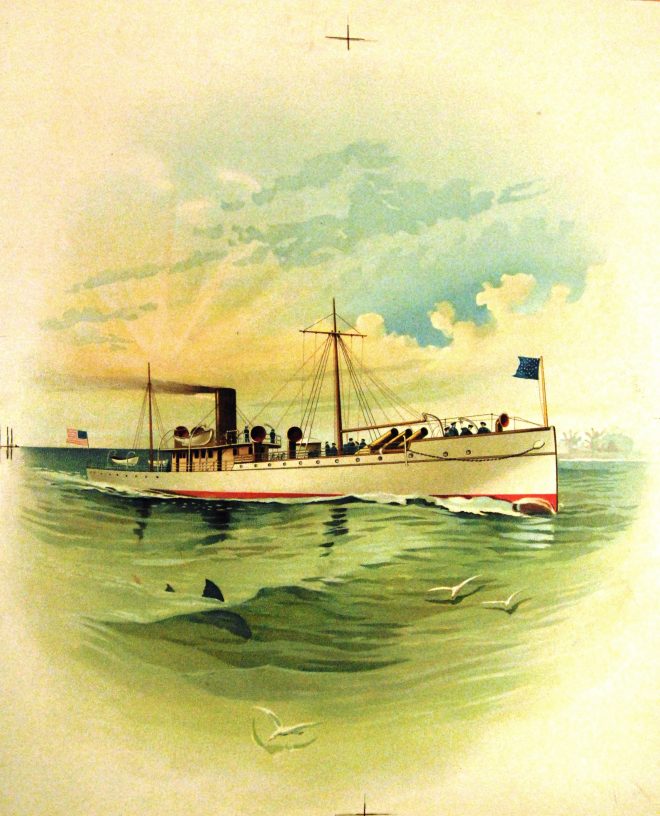
Lot 4812-9: U.S. Navy dynamite cruiser, USS Vesuvius, starboard view. Note, dolphin and seagulls. Reproduction of a painting by Koerner & Hayes, circa 1897-98.
Commissioned 3 June 1890, she worked the blockade along the Cuban coast during the Spanish-American War in 1898 and fired a few of her Dynamite Gun shells at Spanish positions with mixed results. Psychologically speaking, the ship was a huge asset to the US Navy at the time. However, her guns were outclassed by modern naval rifles and by 1904 her unique guns were removed.
The ship always did have horrible handling (40-degree rolls were common) due to her 1:10 length to beam ratio and this, coupled with her mediocre speed (for the 1900s) made her unsuitable to be used as a gun-armed cruiser. Her dynamite guns were therefore replaced by four deck-mounted torpedo tubes and she served for the next 15 years as a torpedoes trials ship, even punching a hole in her own hull in 1915 when one of her steel fish circled back around on her. She spent WWI as a coastal patrol ship.
She was stricken 21 April 1922 and sold for her value in scrap metal. As far as I can find out, there are no surviving dynamite guns on display.
Specs:
Displacement: 930 long tons (945 t)
Length: 246 ft 3 in (75.06 m)
Beam: 26 ft 6 in (8.08 m)
Draft: 9 ft (2.7 m)
Depth: 14 ft (4.3 m)
Propulsion: 2 × 2,183 hp (1,628 kW) 4-cylinder triple-expansion steam engines powered by a pair of steam locomotive boilers
Speed: 21 knots (39 km/h; 24 mph)
Endurance: 1800 nautical miles at 10-knots with 145 tons of good quality coal.
Complement: 7 officers and 63 enlisted
Armor: Half inch plate over sensitive areas.
Armament: 3 × 15 in (380 mm) pneumatic guns (1890-1904)
3 × 3-pounder guns
1xMG
3×18-inch torpedo tubes and 1 experimental 21-inch torpedo tube (deck mounted, after 1904).
If you liked this column, please consider joining the International Naval Research Organization (INRO) They are possibly one of the best sources of naval lore http://www.warship.org/naval.htm
The International Naval Research Organization is a non-profit corporation dedicated to the encouragement of the study of naval vessels and their histories, principally in the era of iron and steel warships (about 1860 to date). Its purpose is to provide information and a means of contact for those interested in warships.
Nearing their 50th Anniversary, Warship International, the written tome of the INRO has published hundreds of articles, most of which are unique in their sweep and subject.
I’m a member, so should you be!

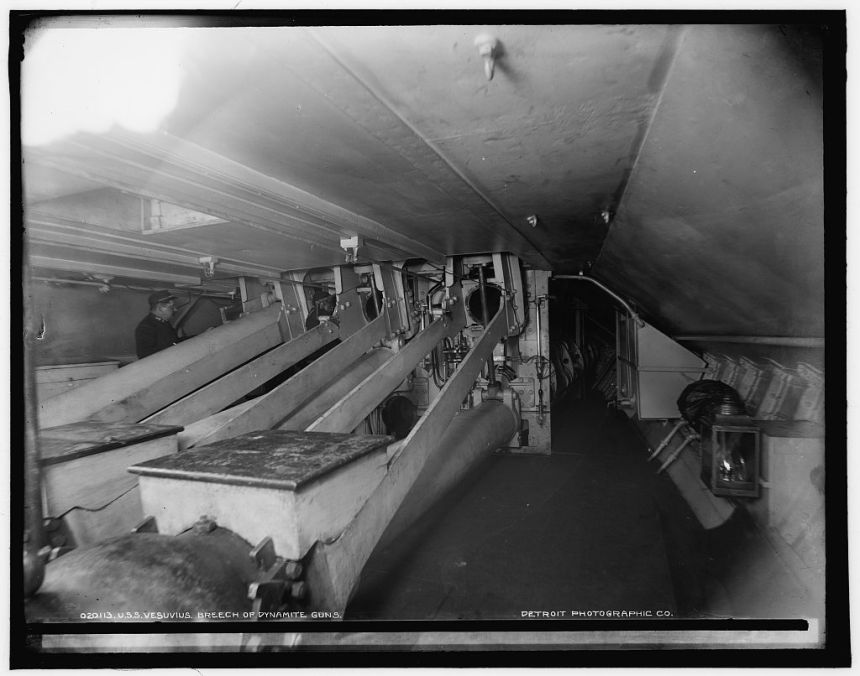
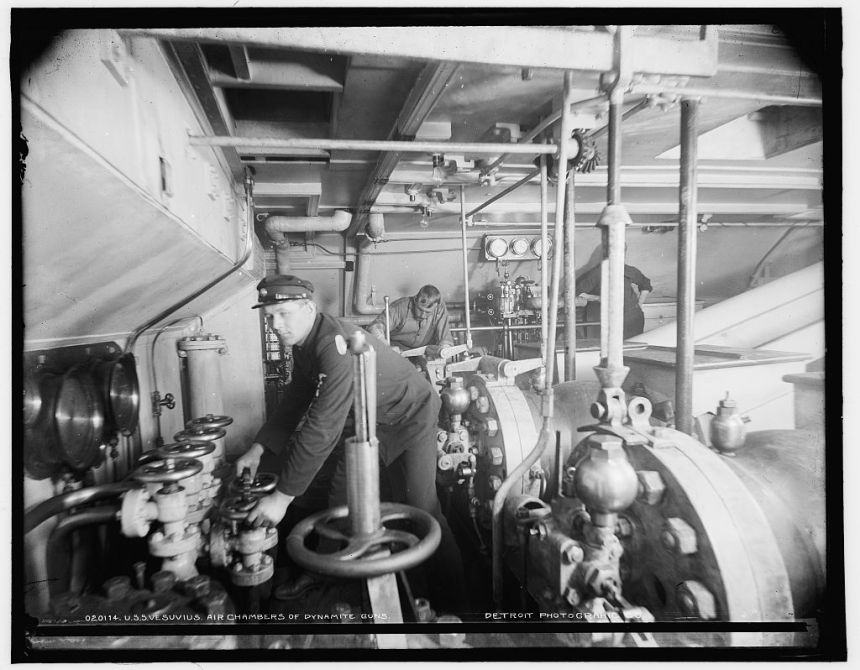


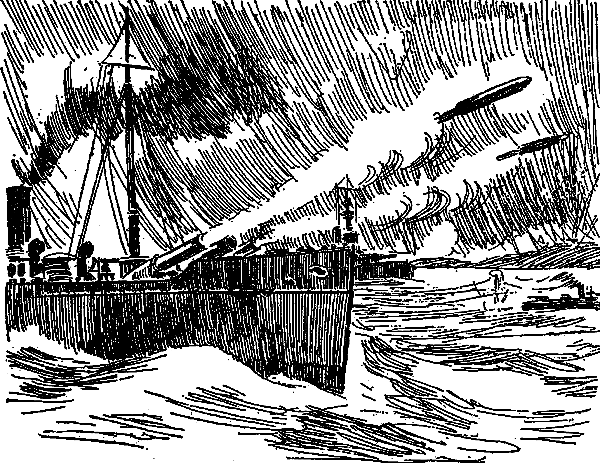

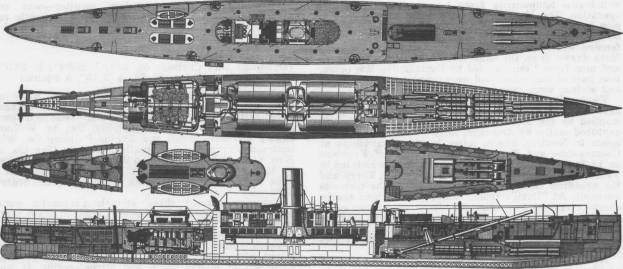
I would like to run your article on the Vesuvius in the next edition of BattleFleet. Are you okay with me using it?
Pingback: Warship Wednesday Aug 10, 2016: The Dynamite Buffalo of Rio | laststandonzombieisland